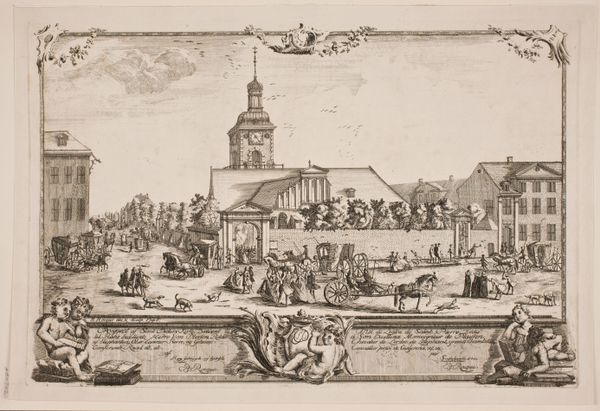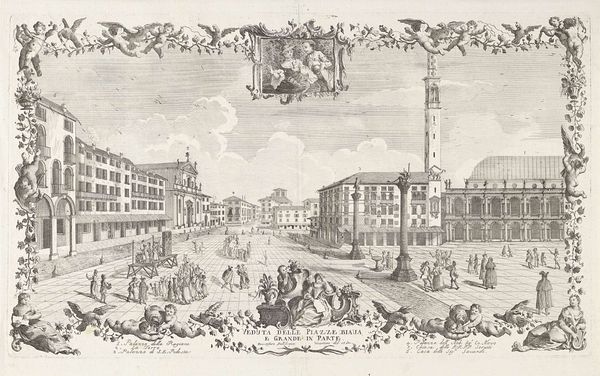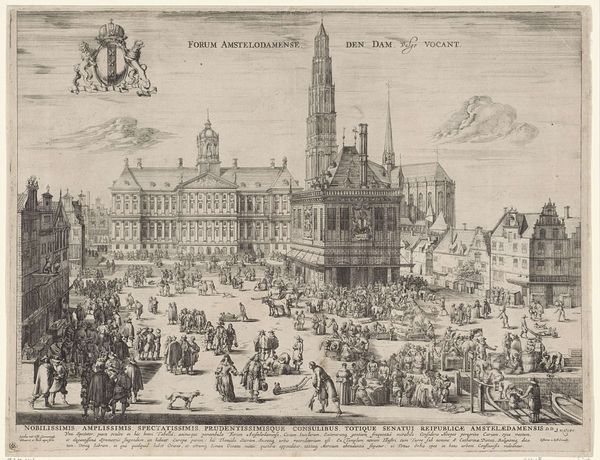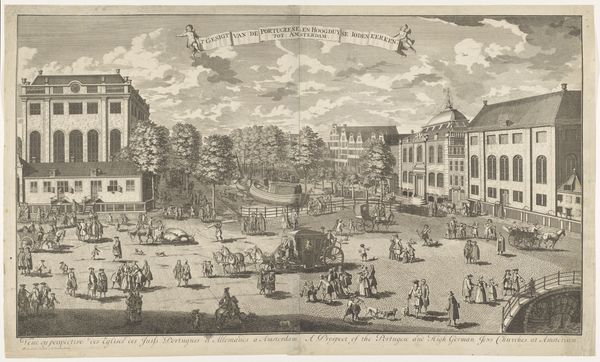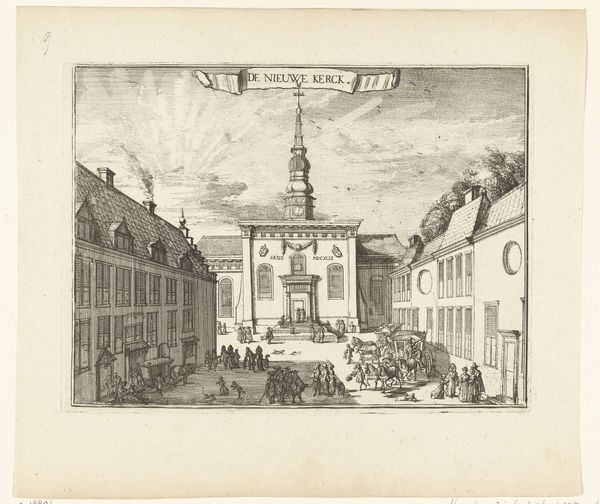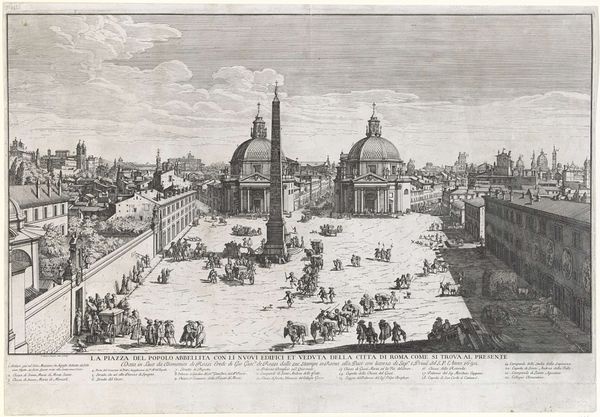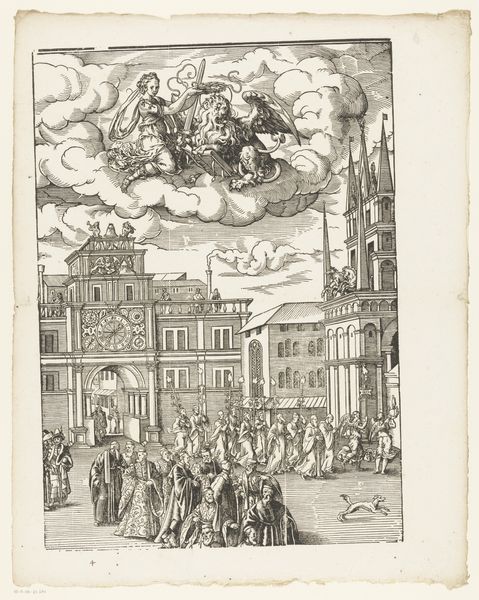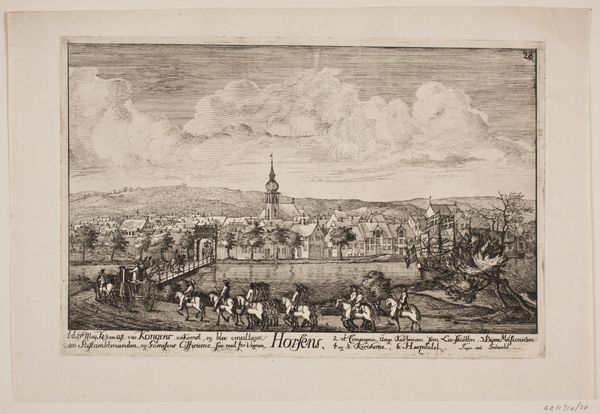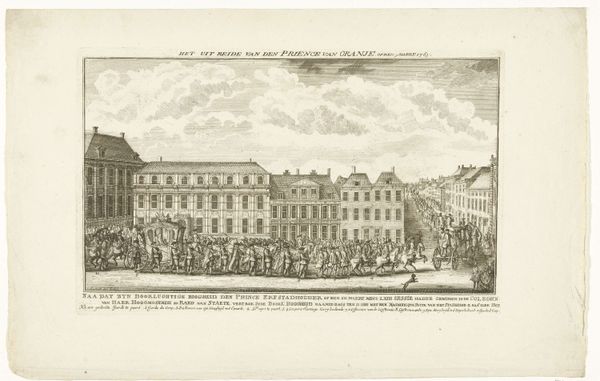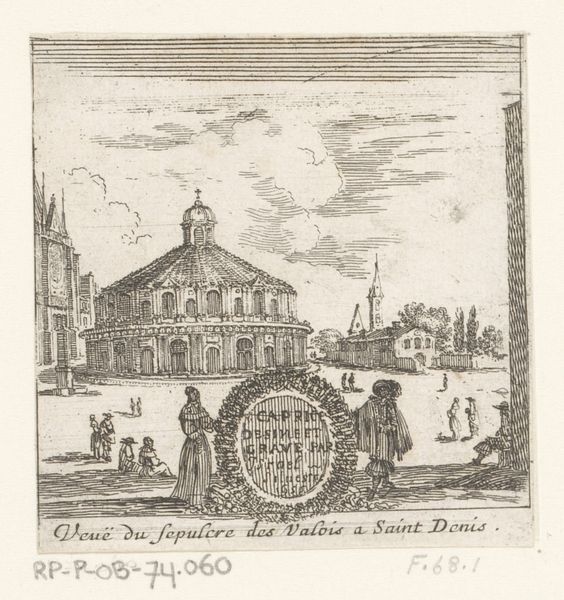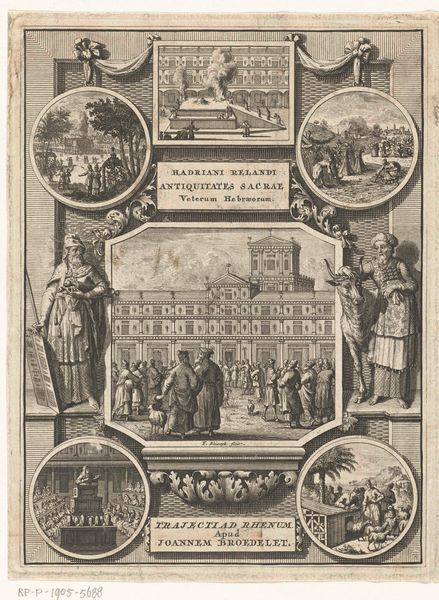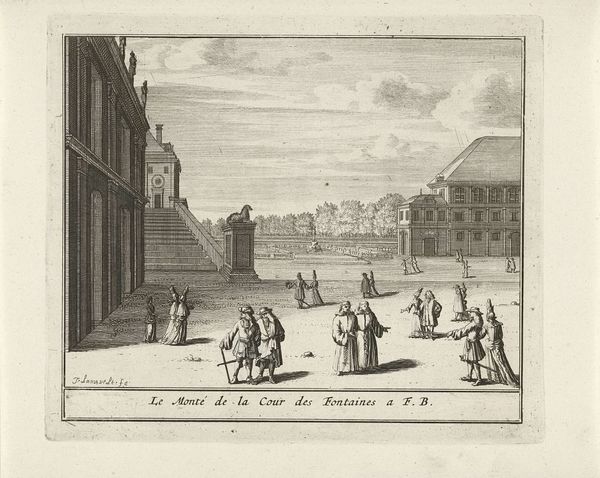
print, engraving
#
baroque
# print
#
cityscape
#
history-painting
#
engraving
Dimensions: height 366 mm, width 338 mm
Copyright: Rijks Museum: Open Domain
Curator: Here we have "Spotprent op de oude en de jonge pretendent, 1745," which translates to "Print on the old and the young pretender, 1745," created anonymously, sometime between 1745 and 1746. This engraving offers a fascinating window into the political climate of the period. Editor: It strikes me immediately as chaotic yet meticulously detailed. The eye is drawn to the bustling town square and the allegorical figures fighting above. The contrast between the mundane setting and the fantastic elements creates a sort of jarring unease. Curator: Precisely. It encapsulates the Jacobite threat to the Hanoverian monarchy through a potent mix of realism and symbolism. The scene isn't merely descriptive; it's a pointed commentary on power, succession, and the potential disruption of societal order. We see it set within an urban context with an allegorical rendering. Editor: Yes, I note how the engraver has paid such meticulous attention to details such as architectural rendering and figural composition. You have figures, then a detailed architectural rendering that is juxtaposed against ethereal or floating elements. But does all of this detail work to resolve the overall lack of formal coherence, and does the composition contribute to our understanding? It looks, for a lack of a better term, too busy, like one cannot figure out a formal vantage point of interest to properly appreciate it. Curator: The seeming disarray speaks volumes about the anxieties of the time. The artist masterfully utilizes the print medium to disseminate complex political ideas among a broad audience. He comments on social divisions. Is he subtly siding with either group of social classes by contrasting them? The chaos on the foreground is mediated by some element of social activity. The political anxieties can only be explored because a relative social stability persists in this city. Editor: I find that very helpful. Through the detailed formal rendering, and semiotic reading of visual and contextual metaphors, we gain additional clarity and further deconstruct social and historical layers of meaning, as well as better appreciating and contextualizing all the formal complexity. Curator: Yes, exactly. Thinking through those contextual factors can help in deconstructing the power structures that shaped this historical moment in the piece. Editor: Absolutely, by understanding its composition as a representation of anxiety, and unpacking it through structural methods and political history, the work yields even greater meaning.
Comments
No comments
Be the first to comment and join the conversation on the ultimate creative platform.
